With the 2023 Giro d’Italia in its mountainous third week, the climbers are, unsurprisingly coming to the fore.
One such rider is Movistar Team’s Colombian climber, Einer Rubio.
Having already won a stage at this year’s opening Grand Tour, Rubio is sitting just outside the top ten in the general classification.
With more mountains to come in the final days of racing, Rubio will likely be hoping to take full advantage of his prowess on the climbs and improve his overall position in the race, or to take another prestigious stage victory.
To help facilitate that, his team sponsors have pulled out all the stops to create a bike that’s light, aero and fit for long days in the mountains.
An aero road bike fit for a climber
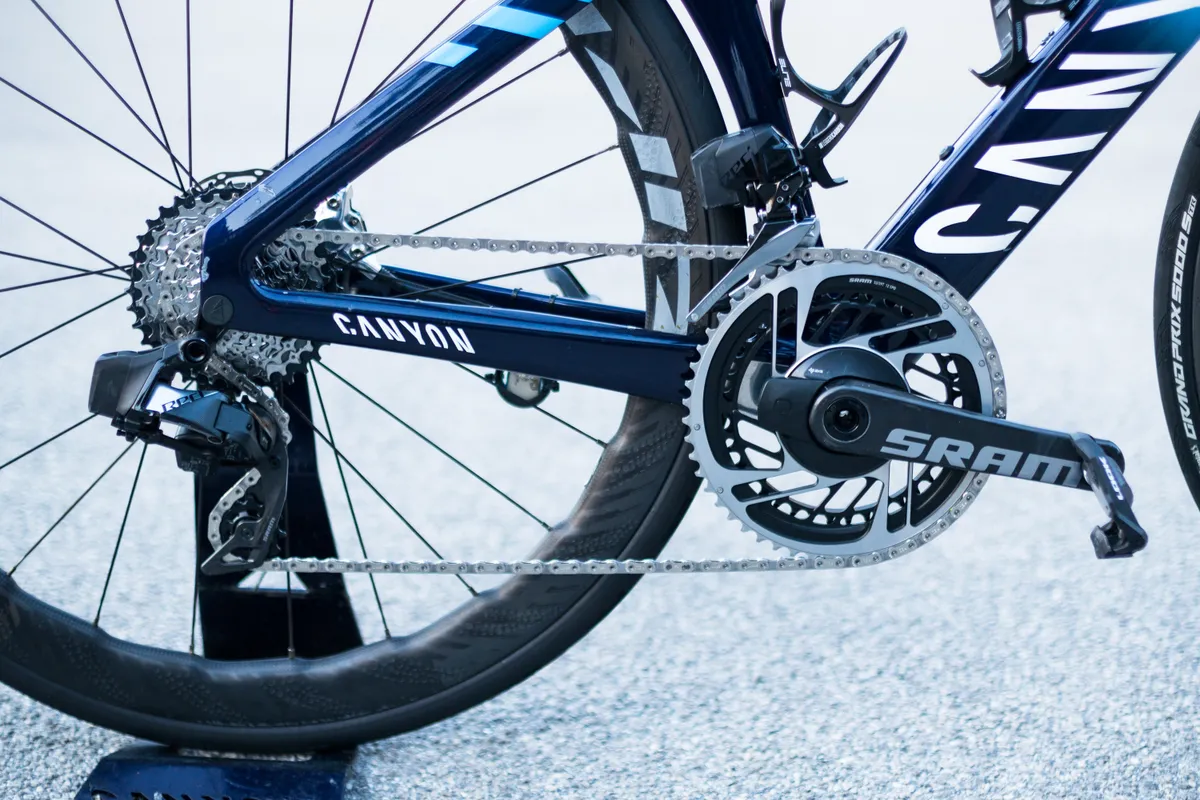
Although the team’s bike sponsor, Canyon, makes a climbing-specific bike (the Canyon Ultimate CFR), Rubio has instead opted to use the German brand’s aero road bike, the Aeroad CFR.
Though we weren’t able to weigh the bike, given the feathery, 7.3kg weight of the size M Aeroad CFR we reviewed in 2021, we can likely assume Rubio’s size 2XS bike weighs very close to the UCI’s minimum weight limit of 6.8kg, perhaps even with pedals and accessories.
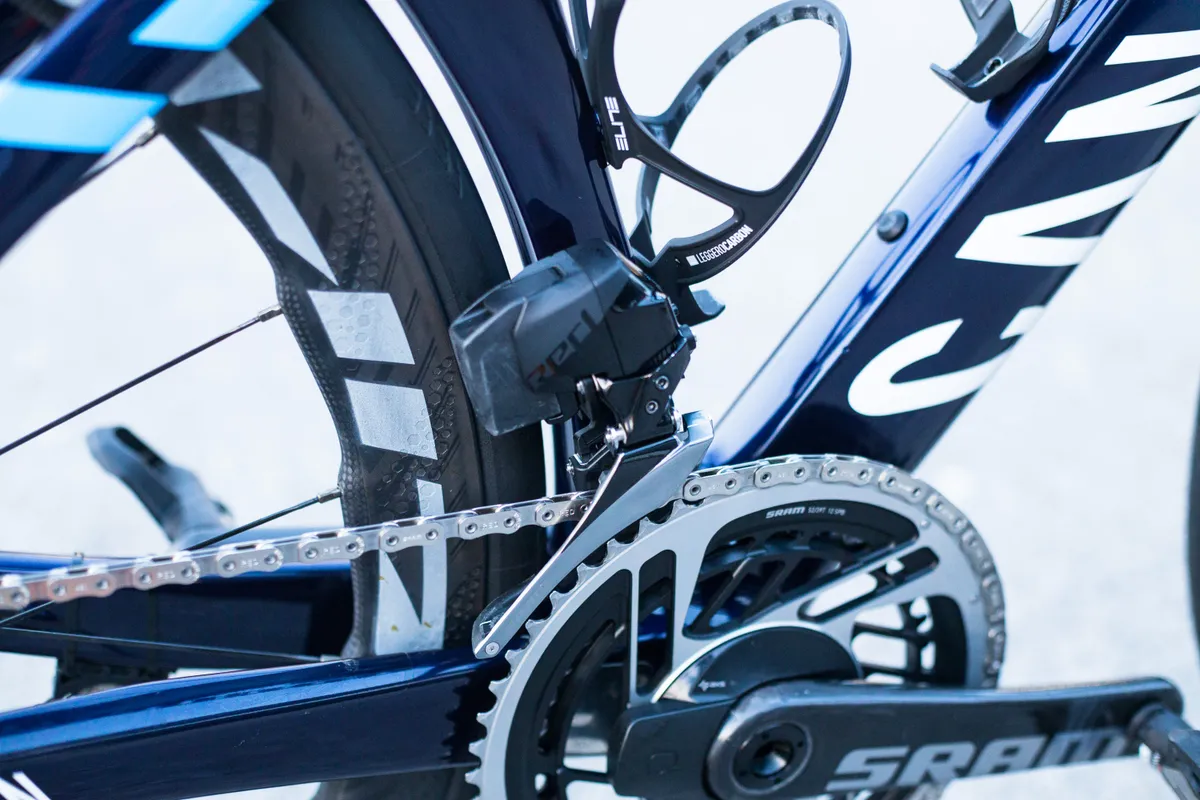
The bike is built with a 2x SRAM Red eTap AXS groupset with 52/39 tooth chainrings and a 10-36t cassette out back.
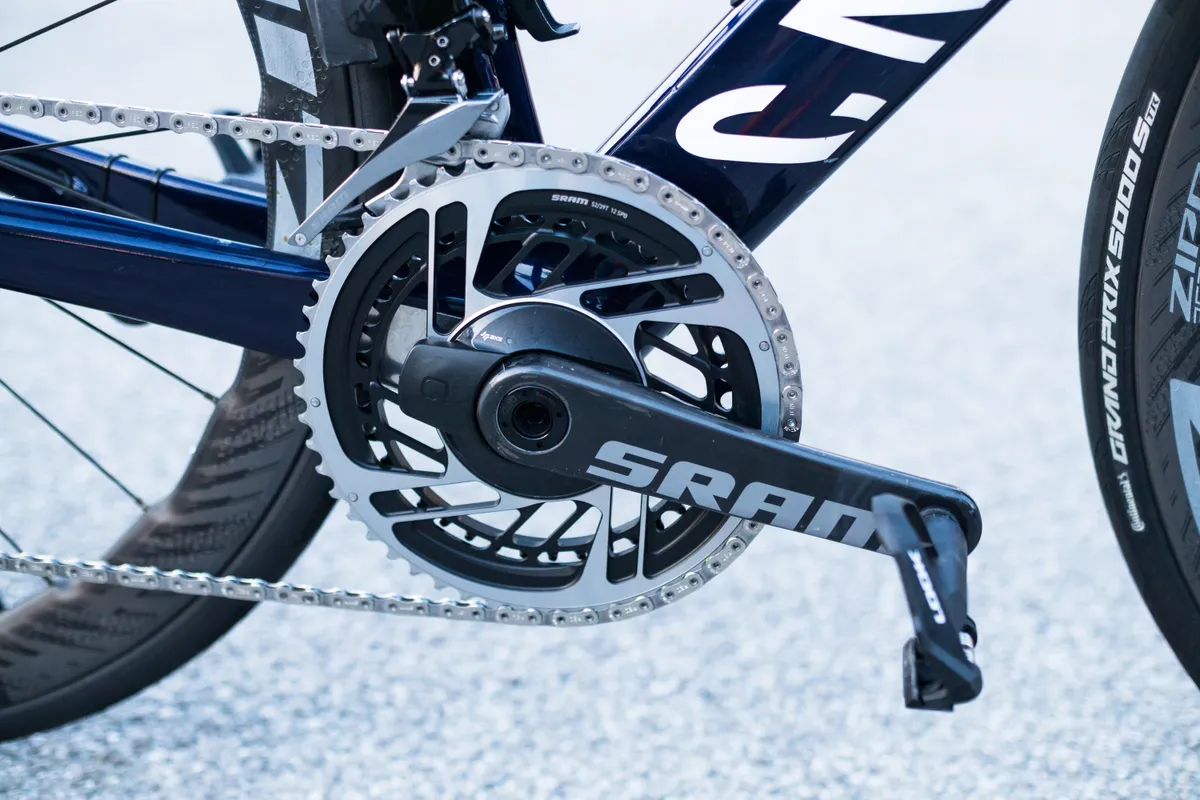
Rubio is using a SRAM Red AXS power meter to measure his power output, which uses highly-rated Quarq internals.
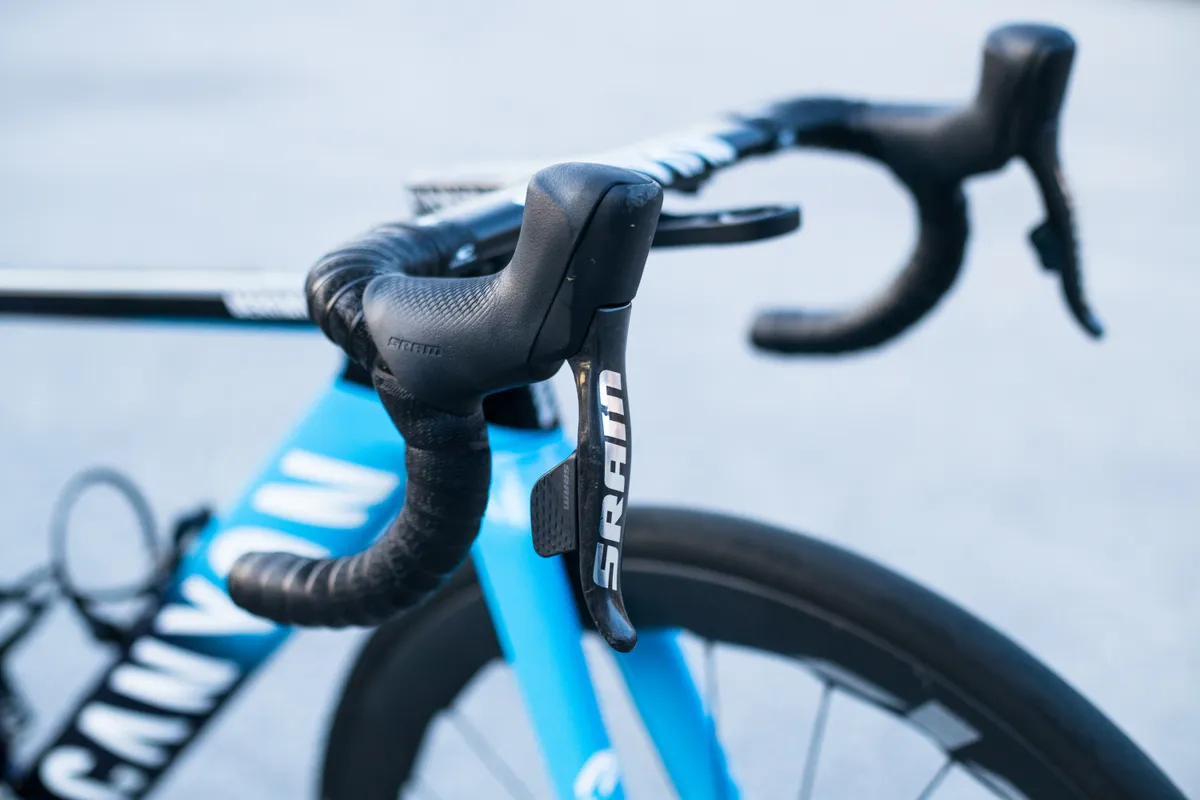
Up front, Rubio has his SRAM Red eTap AXS shifters set up high on the ramps of the Aeroad CFR’s proprietary Canyon CP0018 aero cockpit.
Given the recently launched SRAM Force AXS groupset introduced a revised shifter shape, and the fact we spotted what appeared to be prototype SRAM Red shifters on Movistar Team bikes at a winter training camp last year, could these be due an update soon?
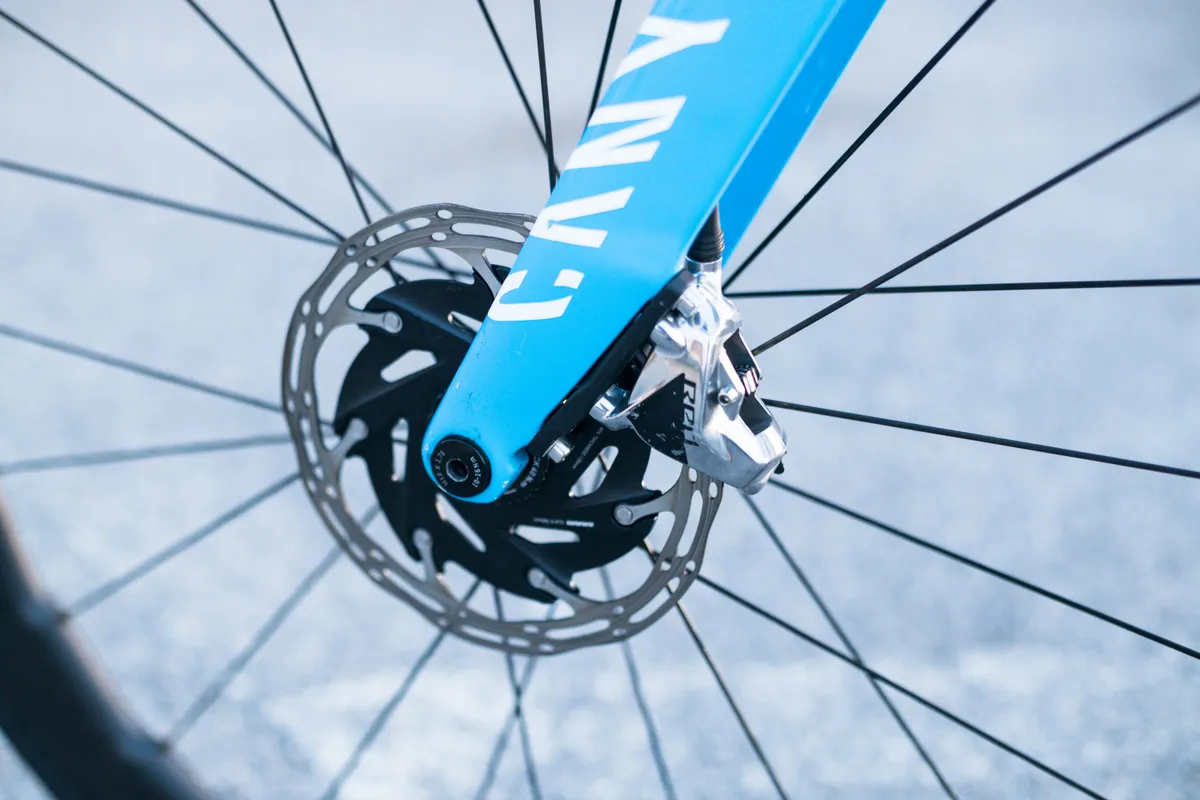
SRAM naturally also provides its Red hydraulic road disc brakes and rotors. Rubio was using a 160mm rotor up front paired with a 140mm rotor at the rear.
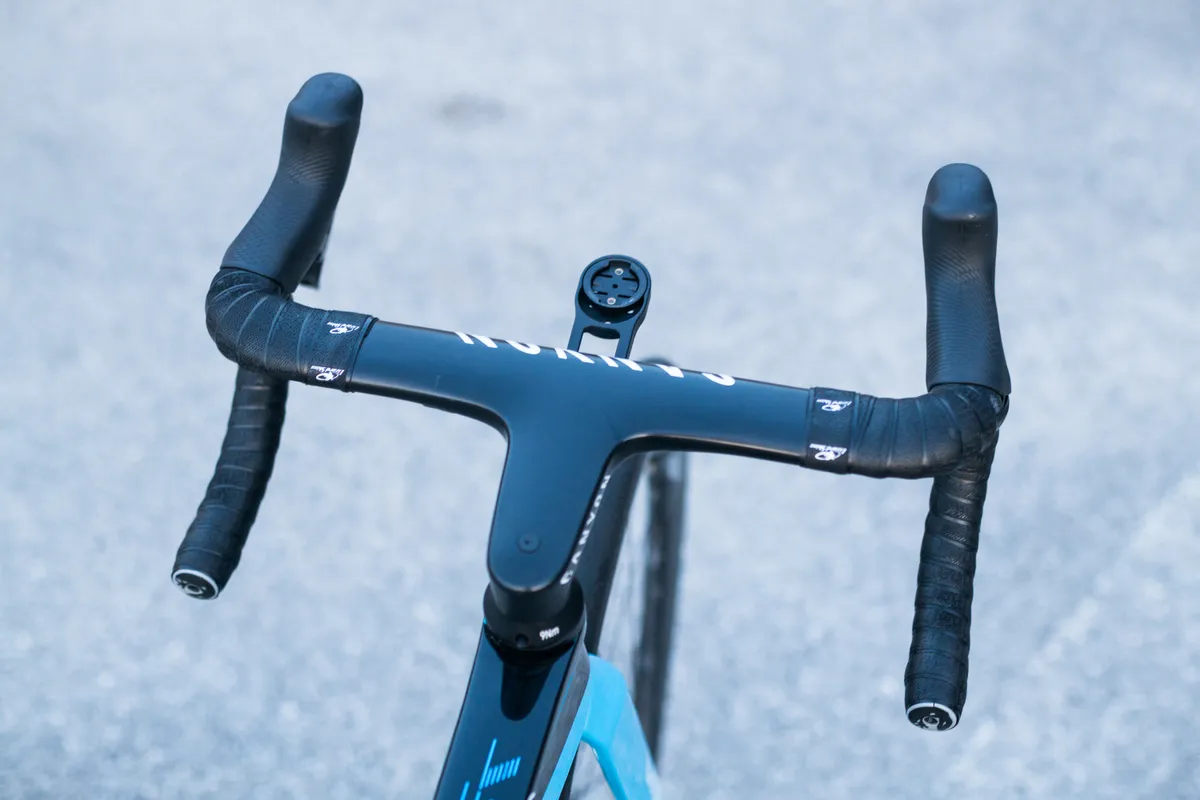
Like many pros nowadays, Rubio tilts his shifters in slightly to help him achieve a narrower, more aerodynamic riding position.
Rubio doesn’t take things to the extreme lengths we saw during the prologue time trial at the 2023 Tour Down Under, though.
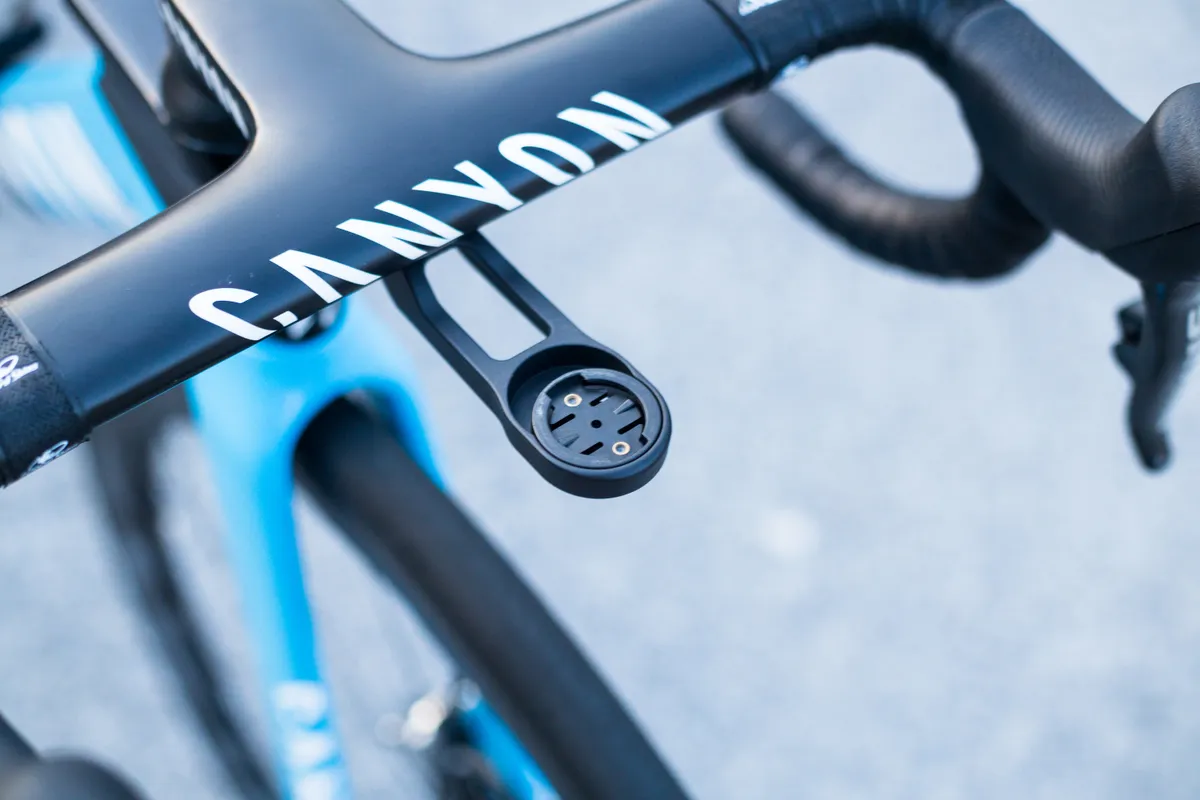
A composite out-front mount provides an optimal location for Rubio to attach his GPS bike computer.
Expensive wheels and tyres
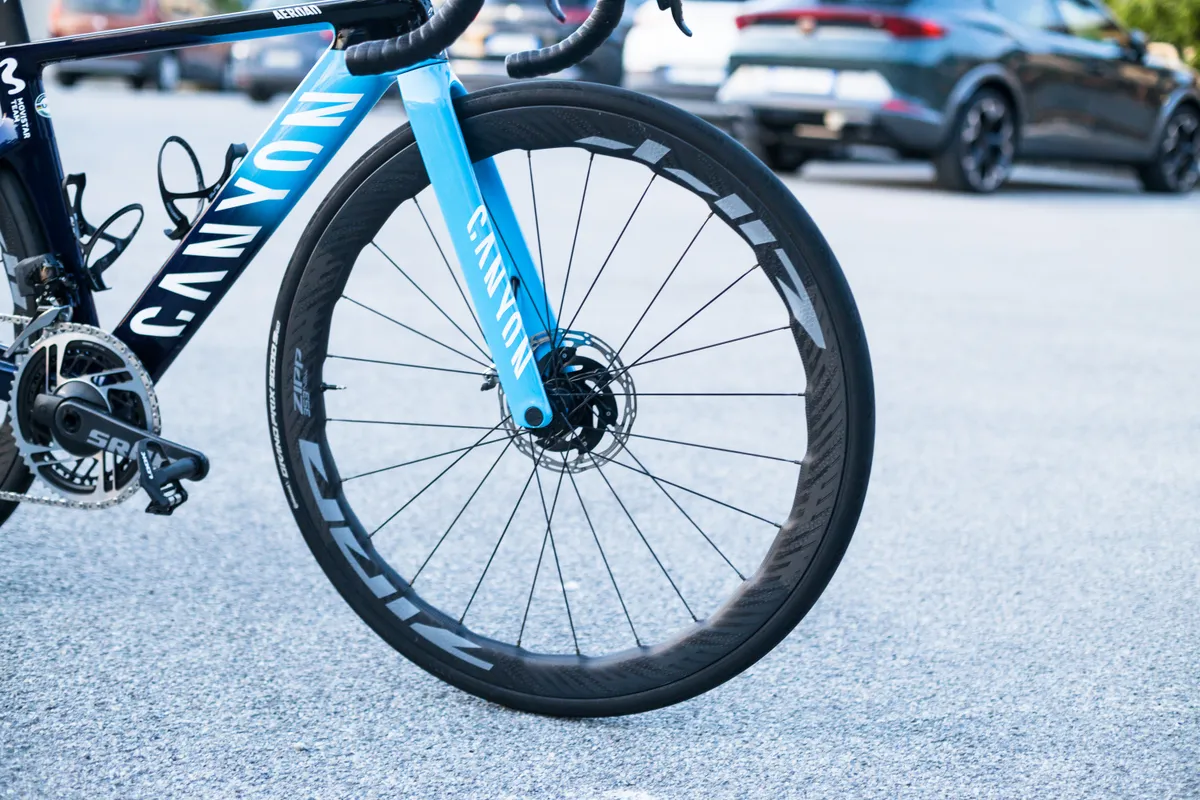
In terms of rolling stock, Rubio has the good fortune of being able to choose from Zipp and Continental’s ranges of wheels and tyres.
For stage 18, which included more than 4,000 metres of climbing over its 161km length, Rubio opted for a Zipp 353 NSW wheelset, shod with 700x28c Continental GP5000 S TR tyres.
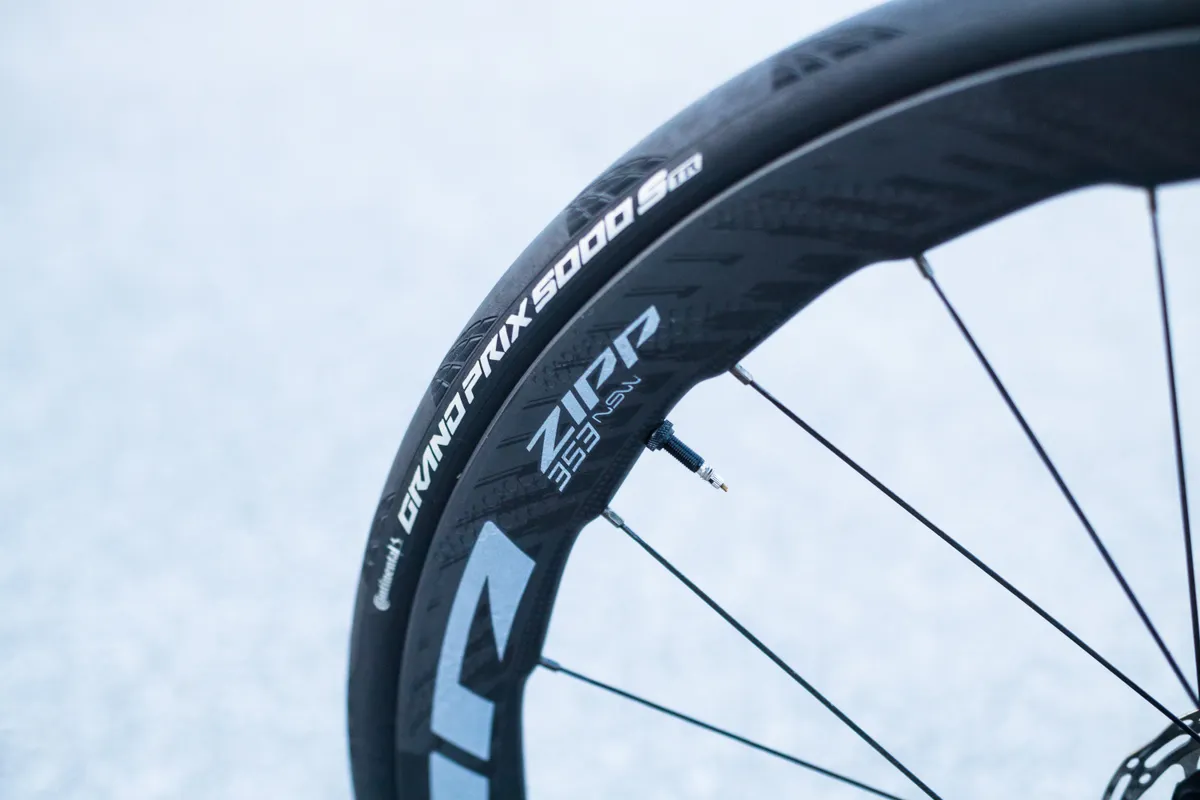
These flagship carbon wheels use a sawtooth rim shape inspired by the tubercles found on humpback whale fins.
According to Zipp, this helps improve the aerodynamic efficiency of the rims without impacting handling or weight to the same extent as a uniform increase in rim depth.
At just 1,304g a pair and with an RRP of £3,200, it’s a super light and super expensive wheelset – not that the latter matters much to a pro rider such as Rubio, of course.
Light finishing kit… and mid-range pedals?
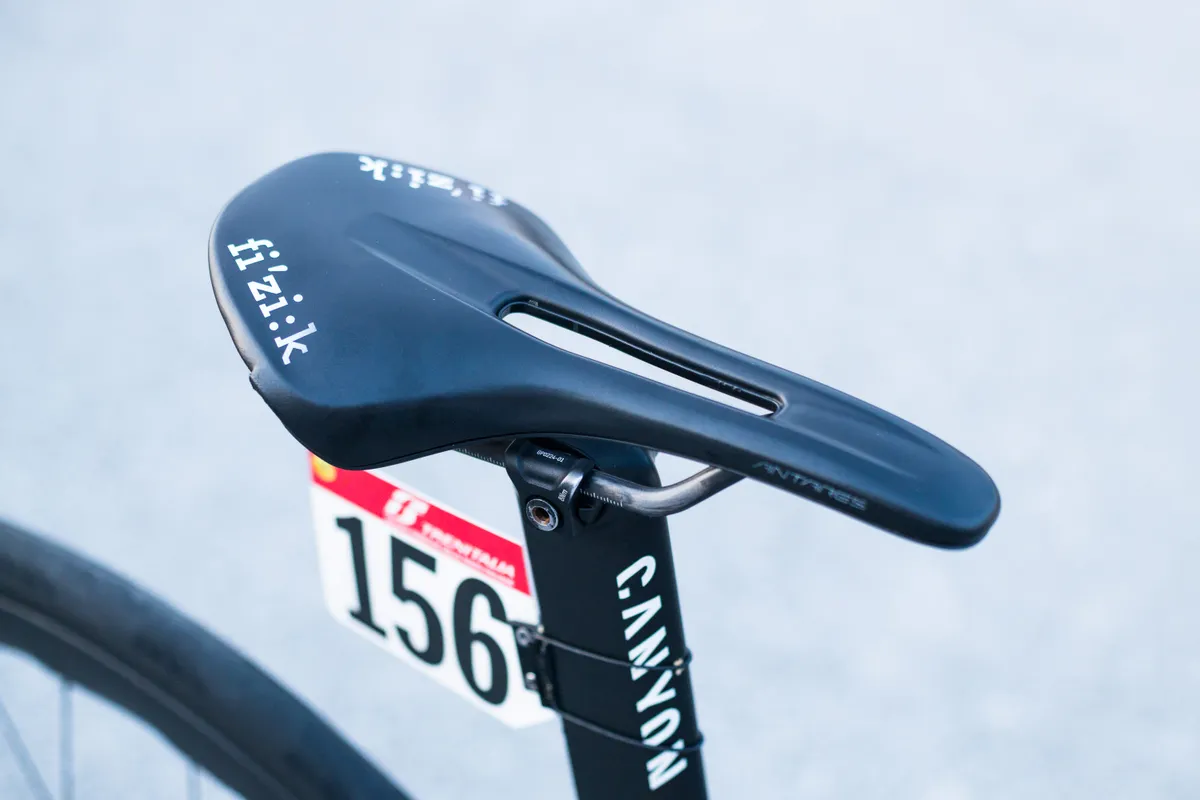
With Fizik as a team sponsor, Rubio has a wide range of saddles available to him.
In this case, he has opted for the new Vento Antares, a recently launched overhaul of the long-standing Fizik Antares saddle.
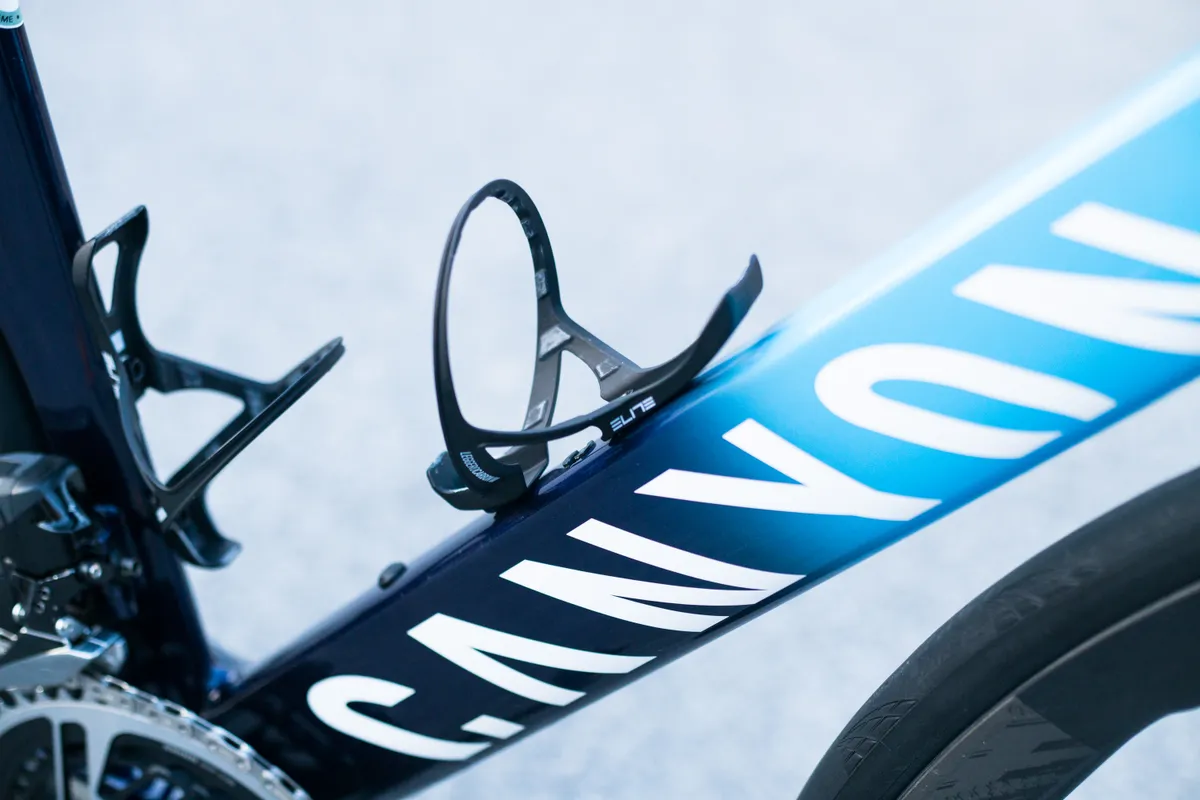
Looking at the finer details, Rubio’s bike is equipped with Elite Leggero Carbon bottle cages, which are claimed to weigh just 17g each.
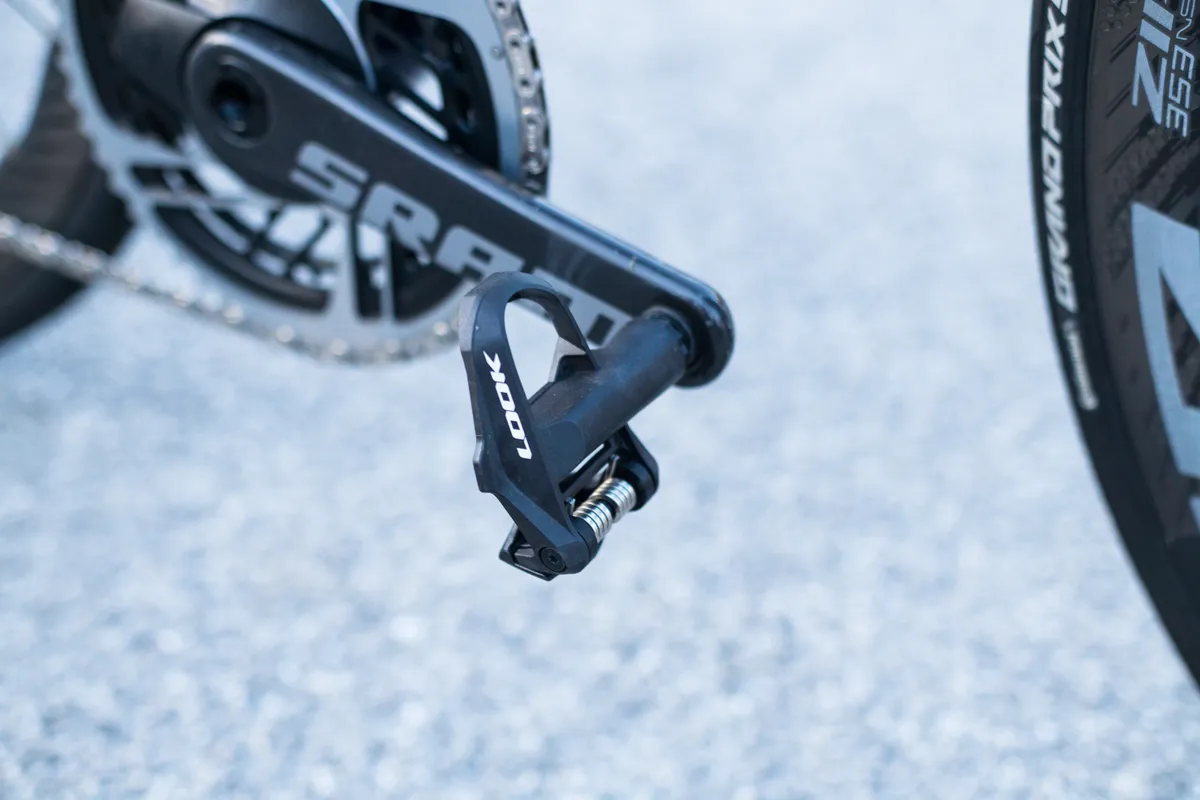
Look provides Movistar Team with pedals, and Rubio opts for the Keo 2 Max Carbon model.
Interestingly, this is nominally a mid-range model, which sits below the Keo Blade in Look’s range of road bike pedals.
Race essentials
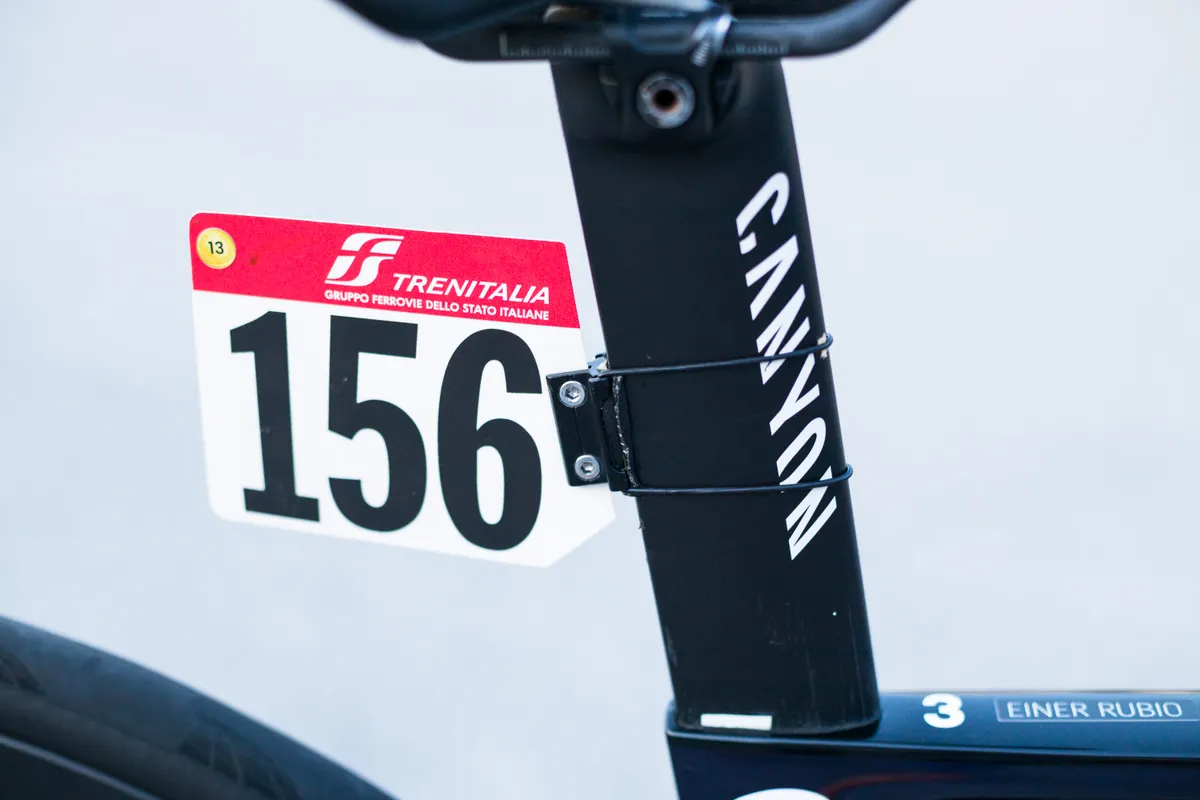
It seems almost every WorldTour team takes a different approach to attaching race numbers to bikes.
In Movistar’s case, the mechanics have used a custom metal number mount, which is attached to the seatpost using elastic bands.

Every rider also needs an official timing chip, too, and on Movistar bikes, these are zip-tied underneath the non-driveside chainstay.
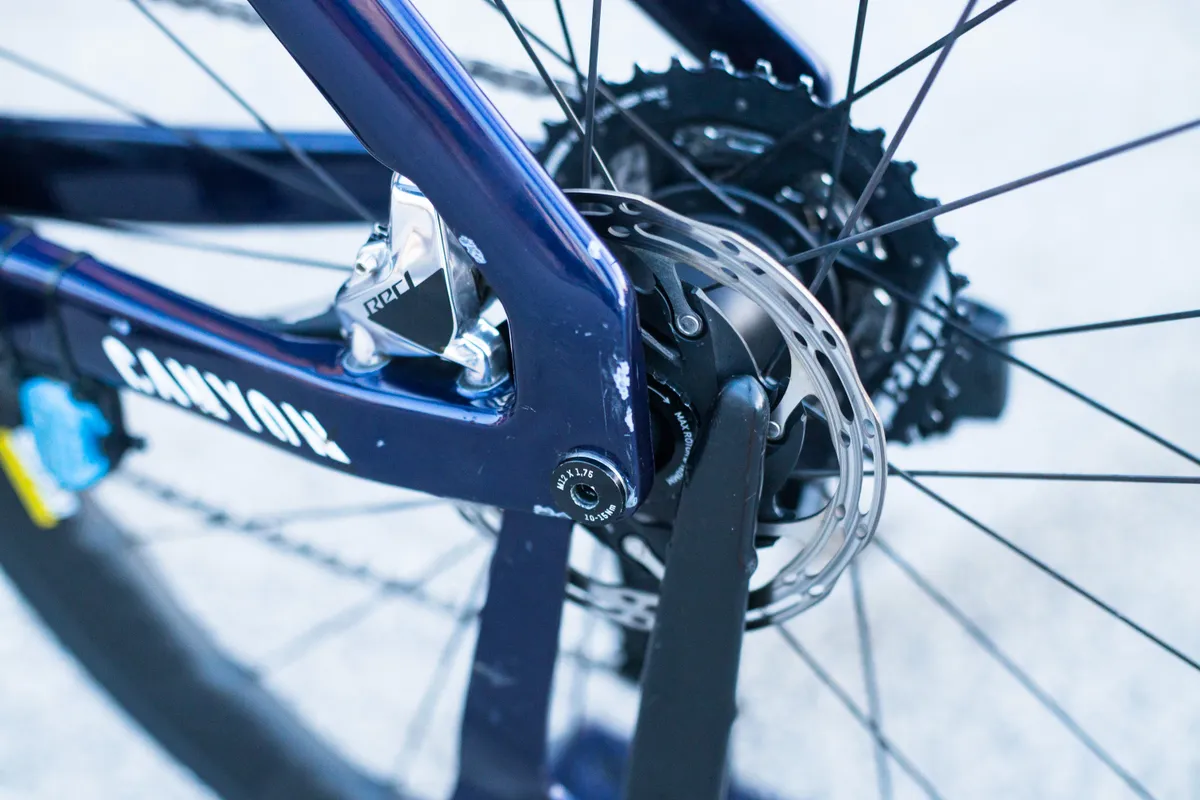
As usual with pro bikes, it’s also possible to spot a little bit of wear and tear on the frameset.
Despite meticulous maintenance from the team mechanics, pro bikes are subject to thousands of kilometres of hard racing and, unfortunately, the occasional bump, scratch or crash.
